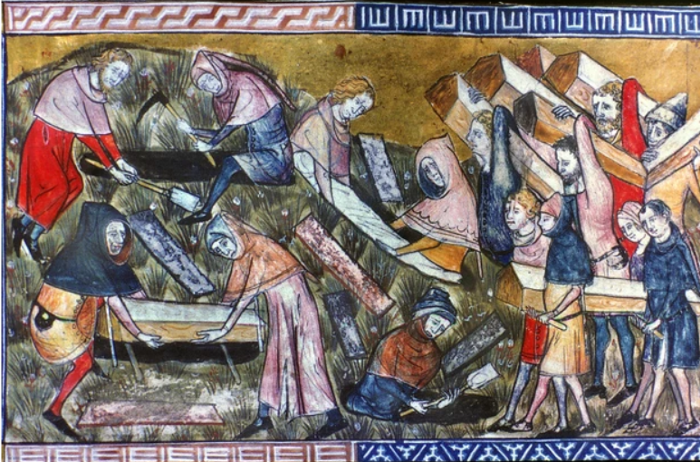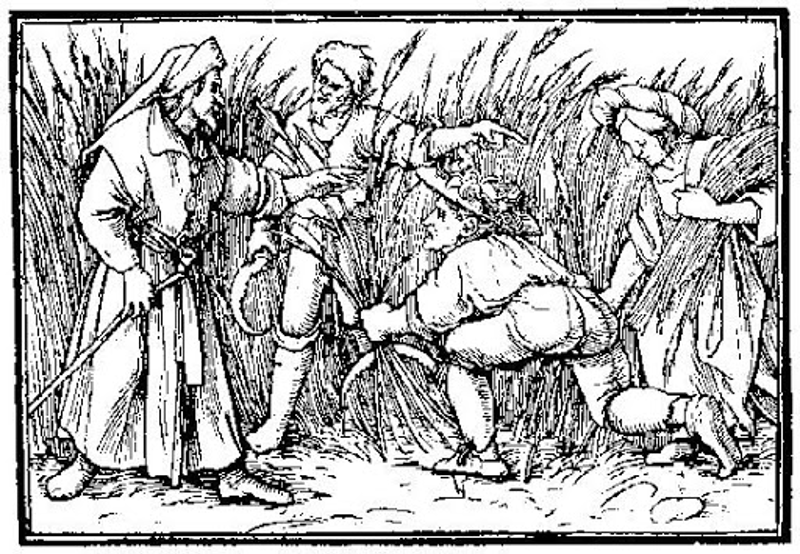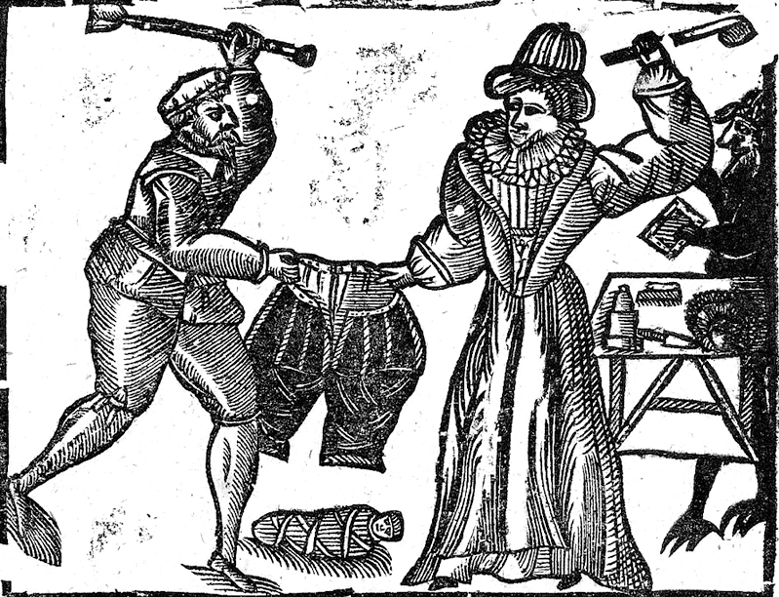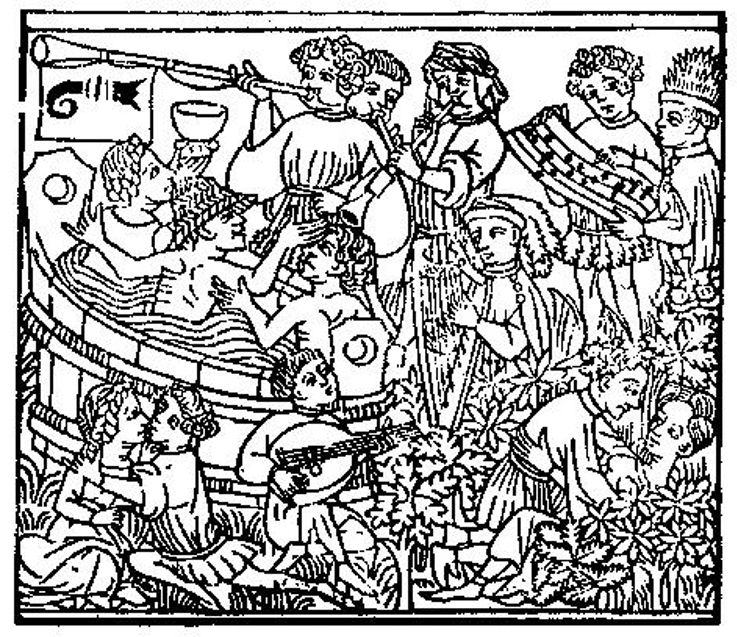How the Great Plague Changed the Western World
A Primer on the Aftermath of the Plague
The following few observations on societal change come from current material found on the Internet.
The bubonic plague of 1347 to 1353 is generally thought to have started in Mongolia. A Mongolian army that was besieging an Italian outpost in the Crimea, the story goes, was racked and weakened by with the Black Death which they had brought with them. In desperation, the Mongols started catapulting the bodies of their dead over the walls of the outpost, thereby creating one of the first examples of germ warfare. The Italians escaped back home and introduced the plague to the city states of Italy before anyone knew what was happening.
Quarantining Starts
In time, the Italians realized that the plague was being brought to their cities by outsiders, and they closed their borders, isolated new-comers and eventually began quarantining visiting sailing vessels. (The word ‘quarantine” is a derivative of the Italian word “Quaranta” or forty because the ships were isolated for 40 days.)
Nevertheless, the plague had already spread, and from 1348 to 1353 the Black Death moved clockwise to France, Spain, England, the low countries, Germany and then on through Eastern Europe to Russia. Figures vary as to the number of deaths, and we have read that it killed anywhere from 1/3 to ½ of the European population. Cites, most particularly port cities, were hardest hit.
The brunt of the plague lasted about 6 years on its first pass, but there were flare-ups every 10 years or so for the rest of the century in one place or another in Europe. Indeed, there were outbreaks of bubonic plague every century here and there into the 1900s.
Social and Economic Changes
What fascinates us are the major social changes that took place as a result of the great plague of 1347-53. Here are some of the things that occurred--
- The end of serfdom in Western Europe was the most important change. It did not happen all at once, but it happened.
- Because of the absence of labor, peasants were better treated by the local lords, and compensation rose. Serfs could negotiate more control and profit from the land they worked, with many eventually being able to buy it.
- At the same time, there was a huge drop in demand for many crafts and products, and prices fell which put many items that were only owned by previously by the rich, into more hands.
- Real wealth was concentrated in fewer hands among the large landowners because of the high number of deaths and the relatively few family members left to inherit it. Many aristocrats of Germany, Italy, England, and France can trace their roots to this period when huge landholdings were concentrated in a few hands.
- Because of the mass deaths, land went fallow. This allowed peasants to work it and in a number of different ways come to own property themselves, and become farmers. (Evidently, the word “farmer” originates from this period.)
- Modern private property laws find their origins during this period.
- Much land that was once cultivated by serfs became pasture. Because raising livestock was not labor-intensive, it became a viable business and beef and dairy products became more affordable to more people.
- As peasants gained a modicum of wealth, they became a market for the meat and dairy products and acquired a taste for some of the finer things in life.
- They also became a market for beer, and at least one chronicler declares that it was at this point that pubs began to sprout up in England.
- With some money in their purse, people began buying better clothing, which disturbed the gentry in some parts of Europe, and laws were passed to dress down peasants.
- Nevertheless, the genie was out of the bottle, a middle class began to appear in Europe for the first time in the late 1300s and early 1400s according to historians. (The Canterbury Tales, written in 1398 by Geoffrey Chaucer is perhaps the best chronicle of life in England during this time.)
- The psychological devastation of the plague, the loss of loved ones, and the uncertainty of long life, gave rise to the pursuit of pleasure, hedonism, and the purchase of luxuries, particularly in Northern Italy.
- Organized religion suffered a strong blow because the people saw that the church and God were powerless to stop the plague. Catholic clergy were hit particularly hard by the Black Death.
- Fewer men of the cloth meant fewer people in positions of authority speaking Latin, which further encouraged local Romance languages to be adopted.
- Not surprisingly, this is the era that gave rise to hospitals. The concept originated in the middle east and spread to the west by the Muslims. The first hospital in Malta was already functioning in 1372. The great hospital of Baune, France was founded in 1443.
- So many Norwegians died that supply ships to Greenland stopped and that colony died out, thus sparing North America from the threat of European migration and disease for another 150 years.
- Overall, the economy contracted. We have read that those enterprises making low-cost goods competed against each other, thereby making sure that they produced no more than a subsistence living, or went out of business. Those making luxury goods flourished.
- Generally, historians tell us, cities were worse off than before. But new opportunities presented themselves, and with land plentiful, and wages relatively high a golden age of prosperity occurred in the 15th century.
Thankfully, none of the experts making observations on the current state of things think the world is going to see anything nearly as deadly as the bubonic plague of the mid-1300s. Nevertheless, changes in everyday life are bound to occur.
Bubonic Plague Today
The bubonic plague bacillus is still alive, and even today a few people contract the disease nearly every year. In 2015, 16 cases of plague were reported and, in 2016, there were only 4 cases. The plague is most prevalent in Africa and is found in Asia and South America. In 2019, two patients in Beijing, and one patient in Inner Mongolia, were diagnosed with the plague, according to the Chinese Center for Disease Control and Prevention.
In the U.S., the areas where the plague is more common include northern New Mexico, northern Arizona, and southern Colorado. Santa Fe, New Mexico is one location that still at some risk, and the bacteria is spread the same way as in the 14th century — by the fleas on rats. Today, antibiotics can be a successful treatment, if caught soon enough.




